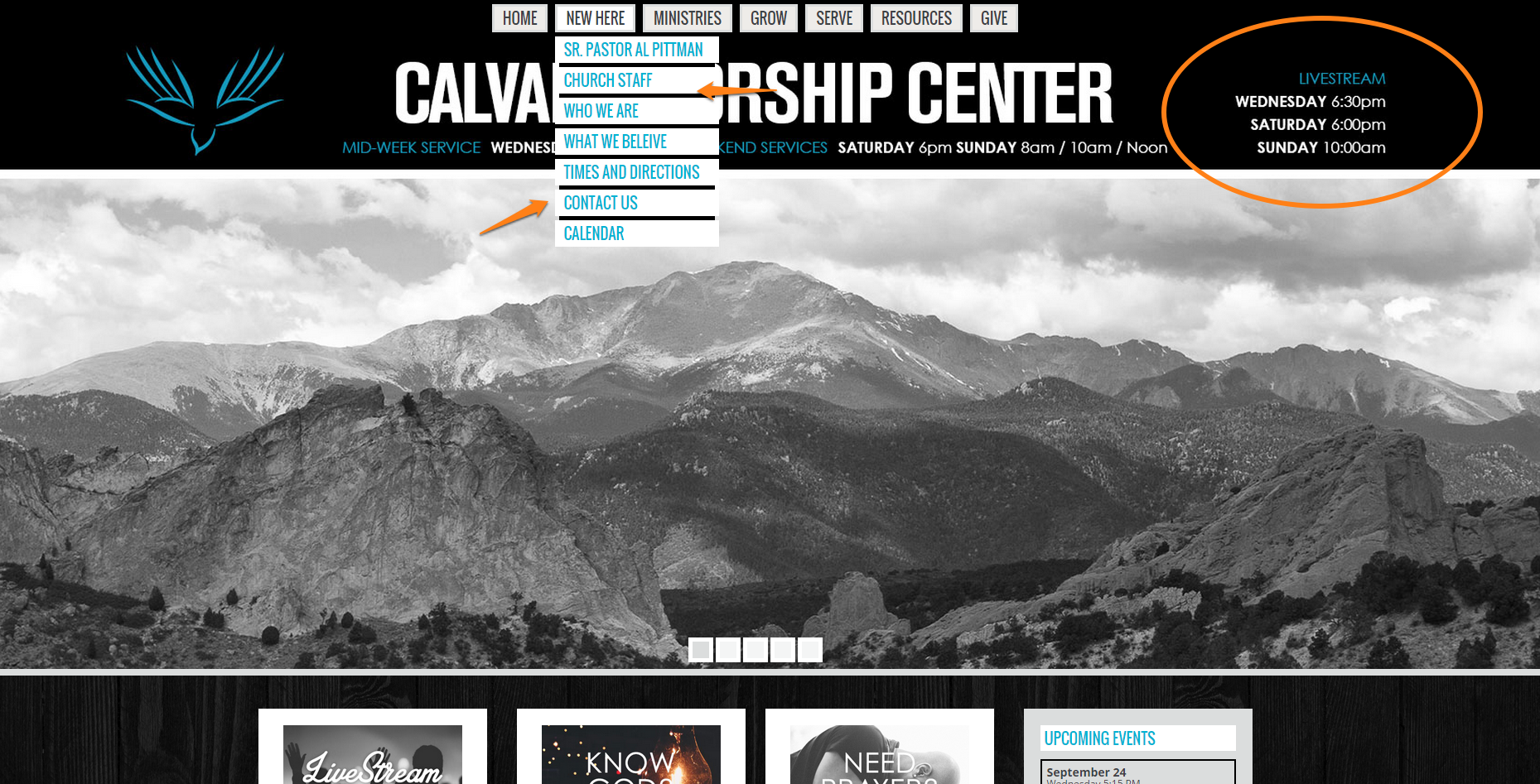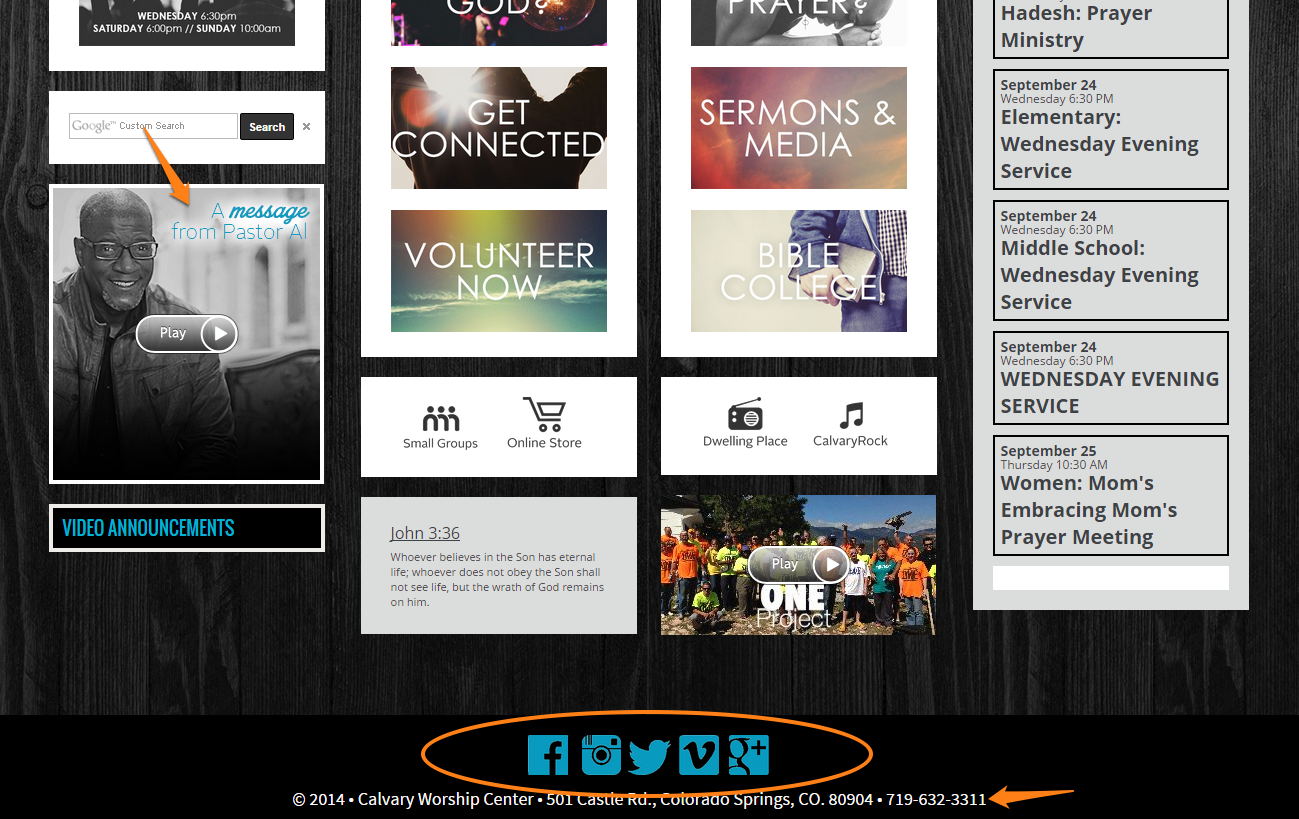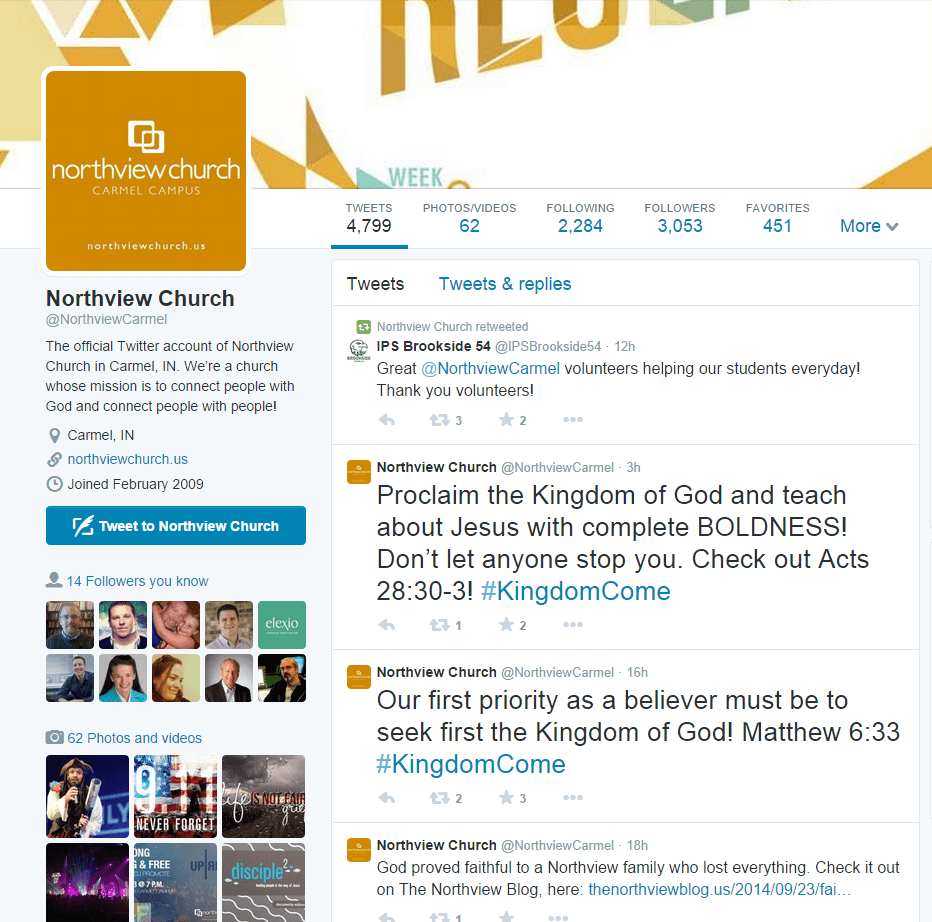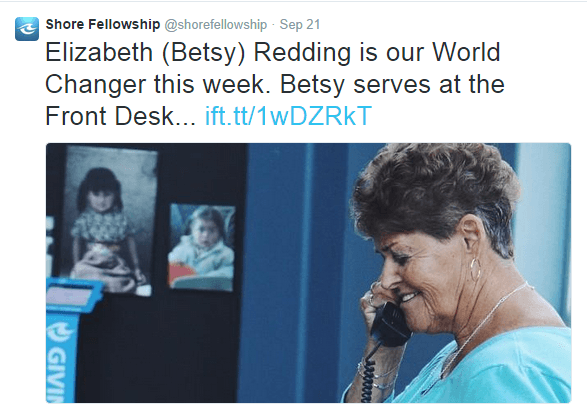-
 9 min. read
9 min. read
-
 WebFX Team
WebFX Team Digital Marketing Agency
Digital Marketing Agency
- The WebFX team is made up of more than 500 subject matter experts in digital marketing, SEO, web design and web development, social media, and more. Together, they’ve helped WebFX’s clients earn more than $6 billion in revenue from the web — and that’s just in the past five years. @webfx
When you think about church marketing, do you picture signs with quips so cheesy they make you cringe? “Don’t give up! Moses was once a basket case too.” How about “our church is prayer conditioned”?
Or maybe something about the term “church marketing” makes you uncomfortable. Churches aren’t growing businesses seeking to create a profit, after all. But according to Center for Church Communication founder Brad Abare, church marketing happens in some form, whether or not it’s intentional—so if you’re helping with one, it’s best that you control the message.
In 2013, Barna found that 47% of Americans had not attended church in the past six months. Desperate to attract these people—especially millennials—some churches employ misleading marketing tactics. They’ll use trendy images representative of urban megachurches and pastors sporting skinny jeans.
But when those twenty-somethings show up, they find a small, traditional country church. Others will mellow the message to draw people in, only to change their tune once they’ve reached the attendance numbers they need. It isn’t genuine—it’s hypocritical.
More than in any other industry, authenticity is the most important element of church marketing. People won’t stick around a church they can’t trust. Regardless of denomination, size, or culture, honesty is what wins people over.
Here’s how some churches are using online marketing to attract new visitors.
The Church Website: Making a Good First Impression
You may have invested time and money in a fancy visitor packet, but that’s not what’ll make the crucial first impression. Before stepping into your church, people will probably check out your website. In addition to offering plenty of interactive tools for members, church websites should also provide visitors with the information they need:
- Service times: According to Grey Matter Research, 43% of church website visitors are searching for service times. If they don’t know when you meet, how can they join you?
- Location details: Would you believe many churches forget to list an address? You should also provide basic directions and list any satellite locations.
- What to expect: What are your services like? Is your congregation diverse? How do people typically dress?
Answer these questions so that your guests don’t feel like outsiders.
- Contact information: Whether it’s a form, email address, or phone number—better yet, all of these—make it easy for people who have questions to get answers.
This information should be located on your homepage or quick to find through simple navigation. Take a look at Calvary Worship Center’s website. They emphasize these key points and include a picture of the local scenery in Colorado.
 One item that shouldn’t immediately draw attention is an online giving option. If it’s the first thing visitors see, they might be turned off. Keep this element in line with other menu options or within a member portal.
One item that shouldn’t immediately draw attention is an online giving option. If it’s the first thing visitors see, they might be turned off. Keep this element in line with other menu options or within a member portal.
But it’s not just about the content. Churches are notorious for ugly websites with electric blue backgrounds and 90s clip art. While they’ve come a long way in recent years, some websites are still poor representations of the church.
To keep your website authentic and looking fresh, minimize the use of stock photography and incorporate recent images of your community. Include photos of staff members with their bios. Tell people what you believe, and a little about the church and its ministries.
Make a connection with visitors before they even walk through the door. Calvary Worship Center includes an approachable message from the pastor alongside a variety of information about the church. 
Getting Social
In a 2012 survey by BuzzPlant, 46% of churches named social media as their most effective method of outreach.
But the people most likely to see your church’s Facebook page or Twitter account will be members who’ve already liked or followed you, not potential visitors. That’s why it’s important to keep your social media accounts relevant to both your current church community and the people you want to reach. Take a look at Northview Church’s social media presence.
This large, multisite church promotes upcoming sermon series and events on Twitter with relevant hashtags. The church also shares encouraging Scripture, engages followers in dialog, and shares posts from their blog.  Northview is active on other platforms, including Facebook, Instagram, and Pinterest.
Northview is active on other platforms, including Facebook, Instagram, and Pinterest.
The images and content on these social media outlets complement each other and the church’s mission—“to connect people with God and connect people with people.” And while a presence on social media is important, churches need to link to those profiles from their websites. This footer—which also includes important contact information—is visible throughout Northview’s website. ![]() Keep these tips in mind when refreshing your social media plan:
Keep these tips in mind when refreshing your social media plan:
- Churches don’t need to be on every social platform. For a large, diverse church like Northview, managing several accounts is practical. But each church community is different.
Go where your audience is.
- Get your entire church on board! People might not stumble upon your Facebook page, so ask members to share updates with their networks and invite friends to upcoming events.
- Avoid obscure acronyms and unique ministry names online. Members might understand, but potential visitors will be confused and feel like they’re out of the loop.
- Promote a series or event rather than the church itself. Church consultant Tony Morgan says your marketing should generate a response—like registering for a concert or attending a service. If your church and its ministries are worth promoting, people will do that for you.
- Be visual. Whether it’s an Instagram photo or a YouTube video, let more than words do the talking.
- Keep it cordial. Don’t start political or theological debates from your church account. Supporting a cause is fine, but don’t alienate people unnecessarily.
Developing Your Marketing Strategy
Of course, churches shouldn’t just start posting on Twitter and changing their websites willy-nilly. Like any business or organization, they need to develop an overall marketing strategy first. Consider your individual church and its “market.” How does your church meet the needs of the community you’re trying to reach?
What are people looking for in a church that you have? Touch on these points in your marketing efforts and be consistent throughout social, email, and print. If you’re being authentic, this shouldn’t be a problem.
 Shore Fellowship Church has a great online presence for churches to reference. The website provides the necessary details, previews the latest message series, and includes a media center where viewers can catch up on archived videos. It also links to a microsite for Feeding The 5K—a campaign by SFC to distribute food to the local community.
Shore Fellowship Church has a great online presence for churches to reference. The website provides the necessary details, previews the latest message series, and includes a media center where viewers can catch up on archived videos. It also links to a microsite for Feeding The 5K—a campaign by SFC to distribute food to the local community.
 The church uses social media to promote upcoming series, recognize people in the church who are making a difference, and get people spreading the word through Twitter, Facebook, and Instagram.
The church uses social media to promote upcoming series, recognize people in the church who are making a difference, and get people spreading the word through Twitter, Facebook, and Instagram. 
Church Marketing is Not Your Ordinary Marketing
Churches face some unique challenges. The typical marketing methods just aren’t enough.
Word-of-mouth marketing and follow-up communication are extremely important. Much of the marketing your church does will be offline and even in person. It takes a lot of resources—people, time, and money.
And marketing budgets in churches are usually modest. Some megachurches have full time staff to create and manage websites, social media, and other marketing initiatives. But most churches don’t have that luxury.
Creating a strong and unique brand is also difficult for most churches. Have you ever searched for “First Baptist Church” or “Community Church”? There are millions of results!
You might even have the same name as other churches in your county. So what can you do to overcome these challenges?
- Settle in for the long haul. Realize that you’re not just going to put up a website, draw a thousand people, and be done. Church marketing is a continual process.
- Utilize the outlets that will give you free or inexpensive coverage. Outside of advertisements, the only cost in social media is time. Also, look for special discounts and programs for nonprofits.
- Recruit volunteers. You probably have a marketing whiz or graphic designer in your church. Ask members with these gifts to help you keep things current.
- Keep track of what’s working and what isn’t. According to the Center for Church Communication, 76% of churches don’t track their marketing efforts. Measuring the success of your marketing tactics and adjusting accordingly will help you be a wise steward.
- Invest in some professional help for the tough items. You don’t need to break the budget, but working with an experienced company could save your church from making mistakes. For example, Google “churches in Dallas.” If you’re located in a church-heavy area, people may never discover you among all the others. A marketing company can help you fix that.
After all, you probably don’t have time to master SEO.
- Connect with other churches to strategize and gain insight. Find community in organizations like Church Marketing Sucks, where communicators are working toward a common goal.
Remember, each church is different, and there’s no one marketing strategy you need to follow. But we can all agree to stop it with the corny signs, right?
-
 The WebFX team is made up of more than 500 subject matter experts in digital marketing, SEO, web design and web development, social media, and more. Together, they’ve helped WebFX’s clients earn more than $6 billion in revenue from the web — and that’s just in the past five years.@webfx
The WebFX team is made up of more than 500 subject matter experts in digital marketing, SEO, web design and web development, social media, and more. Together, they’ve helped WebFX’s clients earn more than $6 billion in revenue from the web — and that’s just in the past five years.@webfx -

WebFX is a full-service marketing agency with 1,100+ client reviews and a 4.9-star rating on Clutch! Find out how our expert team and revenue-accelerating tech can drive results for you! Learn more
Try our free Marketing Calculator
Craft a tailored online marketing strategy! Utilize our free Internet marketing calculator for a custom plan based on your location, reach, timeframe, and budget.
Plan Your Marketing Budget

Proven Marketing Strategies

Proven Marketing Strategies
Try our free Marketing Calculator
Craft a tailored online marketing strategy! Utilize our free Internet marketing calculator for a custom plan based on your location, reach, timeframe, and budget.
Plan Your Marketing Budget
What to read next





